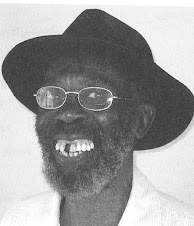From Borders Literature Online
Reviewed by Olatoun Williams
The glamour of the Caine Prize for African Writing is seductive, but what
made it important that I attend the SOAS readings held Tuesday 26th June 2018,
is the fact that the prize has come under fire. Some members of the African
literary community have called it ‘neo-colonial’, perpetuating
stereotypes about Africa. They argue that it is fossilized: shunning new
frontiers. One celebrated member of the community contends that an online
magazine such as Saraba does far more to promote emerging writers than The
Caine Prize for African Writing
I picked up my copy of Redemption Song from the publisher,
New Internationalist, which had set up a small stand in the foyer outside SOAS’s
Khalili Lecture Theatre and went in to enjoy a short event which saw South
Africa’s Stacy Hardy and Nigeria’s Wole Talabi speaking with impressive clarity
during the plenary session. I began to read on my tube journey home. Joining
the five shortlisted stories whose authors I had just been listening to, are
twelve other stories written by authors at different stages of emergence. From
countries across Sub-Saharan Africa, including Ethiopia in the Horn of Africa,
the twelve writers convened in March earlier this year to produce short stories
at the 2018 Caine Prize Workshop held in Gisenyi, Rwanda
Given that each story is either an already
published or edited work, readers expecting high quality writing in the
anthology will find it. They will also find migration, an all too familiar
trope. American Dream (Nonyelum Ekwempu, Nigeria), America (Caroline
Numuhire, Rwanda) and Departure ( Nsah Mala,
Cameroon) tell stories dedicated to Africans in pursuit of greener pastures in
the United States of America. But despite die-hard migrants enduring
ordeals that span the predictably stressful, predictably duplicitous and
treacherous, the stories are still able to display an originality that
distinguishes them from conveyer belt trope. Departure by
Nsah Mala for example showcases a romantic love between an impecunious married
couple that is touchingly sincere and vulnerable to abuse by ruthless cynics
who are everywhere. Standing alongside these three stories are two others which
consider the subject of migration from rarely considered perspectives: ‘No
Ordinary Soiree’ helps to dislodge images from our brains of Rwandan
people damaged by a genocidal civil war. Rwandans with broken bodies and
horrifying confessions have been replaced in this tale by the affluent young
professionals of post-war Rwanda. Out of this sea of smug, well-fed faces, the
lonely face of the celebrant stands out. She is ill-at-ease, out of place at
her own birthday party. Looking around her, she confronts a truth she already
knows: marrying out of a low-income community and into the moneyed class of
society can be as isolating as migrating to another country. She has not been
able to fathom the ways of the demographic group her husband belongs to.
Ngozi by Zimbabwe’s Bongani Sibanda, presents the hardly examined trend –at
least in fiction - of intra-African resettlement. When the protagonist
family flees Mugabe’s Zimbabwe in search of sanctuary and ends up in
neighbouring South Africa, family members live out the prescriptive pain of
disappointed hopes and broken dreams. America,
produced at the Caine Prize workshop by Rwanda’s Caroline Numuhire is
particularly ironic with its soon to be jilted (and thoroughly exploited) fiancée
in rivalry with America which the author has endowed with the magnetism of an
imperious, costly seductress.
In Bringing the Clouds Home, Ethiopian Heran T. Abate spins a web of
enchantment with her presentation of the psychology of children. In this child
scale story relayed through a child’s eyes, we walk with the children,
registering things that delight them and those which inspire fear. Understanding
how cruelly excluding innocent childhood can be, readers will delight in the
evolving compassion of one little girl who befriends another whose disabilities
frighten her. Bringing the Clouds Home is Abate’s delicately told
elegy to the sweetness of childhood.
Reading like a one-woman play, Involution by Stacy Hardy
of South Africa is intellectual curiosity run amok. Hardy, an editor of the
respected Chimurenga magazine, explores the unique experience of a woman who
has found a small creature, the size of a microbe, secreted inside her vagina.
The story is amusing: cleverly and richly detailed in its examination of the
body, texture, intentions of the creature – will it breed?- and its
needs – won’t it need to eat? Those who dismiss the Caine Prize for
conservatism will repent, faced with the picture of a young woman squatting,
holding a saucer of milk to her labia lips and keeping it there for moments,
she is that serious about feeding her guest.
But if is true that poverty - bête noire of Caine Prize challengers - is
ubiquitous in the 2018 anthology, with critics denouncing this trope served up
year after year, its inevitability only exposes the truth: that poverty –
migration’s main catalyst - is not the exception in Africa but the rule. I
agree that it is crucial to display Africa’s wealth in our artistic expressions:
her tribal and language diversity, her plurality of cultures and myriad art
forms, but not at the expense of her poverty, particularly the heartbreaking
poverty of her children. It is for this reason that I welcomed Olufemi Terry’s Stickfighting
Days, (Caine Prize 2010). Terry’s terrifying portrait of street boys is
as important in its social objectives as it is masterful art.
 |
| Makena Onjerika |
If the 2018 Caine Prize winner Fanta Blackcurrant did not
elicit in me the same response, it is not because the story draws attention to
Africa’s child poverty but because I questioned the idiom in which Makena
Onjerika’s children speak and behave: what is her frame of reference? That
said, scenes involving familiar, visceral human drives, elevate Fanta
Blackcurrant and we watch with the horror of recognition as the other
children, overcome by jealousy, set violently on Meri because of her ‘beautiful…
brown mzungu face’. We nod with understanding as the same children
express a compassion towards her which grows in proportion to the darkening of
her skin, the destruction of her beauty by hardship beneath the scalding sun.
And with that calamity comes the slipping away of hope of rescue from Meri’s
trembling grasp. The children are compassionate because the donors who walk and
drive past, can no longer distinguish her from the rest of them.
Bongani Sibanda’s Ngozi is centred around an idea put
forward in Fanta Blackcurrant: physical beauty as a life-line.
Though this story takes off with a Zimbabwean family in flight from cash poverty,
it quickly veers into an examination of the life outcomes of a person whose
face lacks any comeliness that would endear him to humanity. It is ugliness,
not cash poverty, which dooms the prospects of Thembani in this totally
unexpected tragedy about fraternal love and loneliness. At the broken
heart of this excellent story is an horrific crime and an ending you will not
see coming.
Beyond White Space founder, Vimbai Shire, provided oversight for the writing workshop. In
her introduction to the collection of stories produced by participants, she
comments that they ‘(tackled) the topical and the taboo’. I found this to be
true of the anthology. With a selection of four remarkable stories dedicated to
their cause, the Caine Prize has paid tribute to the brave LGBTQ voices across
Africa calling for inclusion and respect. In the eponymous Redemption
Song, Nigeria’s Arinze Ifeakandu has crafted a sensitive and compelling
domestic tragedy in which there is no mercy, no redemption for the husband who
left his wife for a young male lover and who is suddenly and tragically
bereaved of his small son. Kenya’s Troy Onyango, rising star in the literary
firmament, has bequeathed All Things Bright and Beautiful. It
weaves a rich, digressive template while retaining a compelling linearity about
a family’s collapse in the wake of the father’s suicide wearing their mother’s
white and pink-laced panties. A letter to a sibling brimming with love and
sorrow in this tragedy contains the anthology’s most heart-achingly memorable
lines.
On the Prize’s shortlist, American Dream is Nigeria’s
Nonyelum Ekwempu’s offering. While the main focus is a defenceless widow and
her small children, the author extends her compassionate gaze to homosexual
children when the young narrator finds his neighbour motionless on the floor of
his home, ‘his face swollen beyond recognition. Cuts and bruises covered his
entire body... (while) his mother seated ‘on a short stool in a corner (is)
shouting, ‘Bastard, bastard, bastard,’ repeatedly in Yoruba.’ This
disturbingly silent boy was one of two schoolboys attacked at the school by a
mob of other boys who had caught them kissing.
Nigeria’s Eloghosa Osunde has written Grief is the Gift that
Breaks the Spirit Open which falls into the afro-speculative but
Osunde, the 2017 Miles Morland Scholar, has brought into being an unusual
spirit which serially inhabits and serially dumps women’s bodies. In this
layered story, the ‘hoverer’ is a bi-sexual femme fatale with a trail of
broken hearts behind her and in front of her, a twist of irony which sees her
falling for a mirror image of herself. Erotic love is a condition that
excites in the being the desire to ground herself permanently in human flesh.
Osunde’s story is an interesting exploration of sexuality within the
intersection of the imagined ethereal with the corporeal. In this anthology
festooned with speculation, Osunde’s hoverer’s movements from an
ethereal state to the material can be categorized not only as an exploration of
identities but as a form of migration: from one condition to its opposite.
“Speculative fiction is everything that isn’t realism, and it spans the
entire continuum of the fantastic… (It is) any fiction that bends the known
world…Fantasy, I consider as a sub-genre of speculative fiction based on
imagined creatures, events, forces, people and other elements that do not come
from reasoned extrapolation of established knowledge and are presented without
respect to a scientific method” (Wole Talabi, Caine Prize 2018 shortlist).
Four stories in the 2018 Caine Prize anthology
traverse the spectrum of speculative fiction and fantasy as defined by shortlisted author
Wole Talabi at the SOAS Caine Prize readings held 26th June 2018. Grief
is the Gift that Breaks the Spirit Open by Eloghosa Osunde, mentioned
earlier, is a fantasy exploring the gravitational pull of the human body and
its constraints through the ‘human’ experience of spirit beings.
 |
| Bongani Kona |
Spaceman
by Chimurenga Magazine editor, Bongani Kona from South Africa and Zimbabwe, is
a tragedy in five vignettes illuminated by a disquieting brilliance. It charts
two bizarre episodes in the histories of two unrelated groups of people: a
white South African family which, while nursing the horror of a double murder
and suicide in the family, must tolerate the presence of the family patriarch
who puts the blame for the crimes on the kaffirs. Parallel to the
breakdown of the white family, is a frantic car journey undertaken by a motley
crew of damaged African souls who have just experienced a failed attempt at
space travel in a make-shift rocket. When these haunting stories converge in
the 4th vignette, the tragic symbolism of Bongani’s outstanding fiction becomes
startlingly clear.
Where Rivers Go To Die is the gift of Ugandan Sci-fi filmmaker and speculative story writer,
Dilman Dila. It is set in a sealed off forest inhabited by a people who
venerate the organic and hand-made whilst rejecting automated machinery,
reviling it as pure evil. Dila’s story is accomplished and dense with the
perceptions of the little boy cast out by the tribal elders subsequent to his
mother’s death. The forest is dark and what appears before our squinting eyes
is a surreal tableau: a wounded little boy, taught to believe he has the
magical powers of an ‘abiba’, a ‘demi-god’, hopping about on one leg,
desperately searching in the darkness for a place to call home.
Awuor Onyango’s Tie Kidi is a gleaming, speculative wonder
which borrows liberally from Luo mythology. The world evoked here is perceived
through the eyes of a curious and adventurous girl child who can mold time and
who kicks against her confinement in a simulation tank, for her own safety. The
story looks at the present condition of an already unsustainable humanity and
projects into a future in which humanity’s survival is illogical, ‘if the
sun were truly to explode’. Wole Talabi, 2018 Caine Prize shortlisted
author, might be, as they say, emerging, but in Wednesday’s Story
he has already displayed mastery of his craft. In eighteen and a half pages,
this Nigerian author has told a story of magnificent scale based on the
well-known nursery rhyme, Solomon Grundy. In his brief biography included as a
footnote, he professes to a liking for ‘oddly-shaped things’ and ‘elegant
equations’ providing evidence in a story replete with surprising arcs and a
disorienting play with time’s equations. His love of ambitious play has made
possible a brilliant and totally unpredictable fleshing out of Solomon Grundy:
conceived here as an ochre-skinned, ankara clad child of the rape of a Yoruba
kitchen maid by an English merchant sailor.
Curiosities that defy the classifications we can fit the other stories
into are The Armed Letter Writers by Nigeria’s Olufunke Ogundimu
(shortlist) and The Weaving of Death by Rwanda’s Lucky Grace
Isingizwe. Both are testaments to the joy of story-telling but in mood and
tone, they couldn’t be further apart. The Weaving of Death is an
interesting story treating attempted suicide in the family and the emotional
travails of two siblings. At the other extreme, The Armed Letter Writers
and the inhabitants of the estate whom the thieves plan to rob, provide
farcical comedy about dysfunction and criminality in Nigeria’s law enforcement
and public service delivery. Ogundimu’s yarn is pure theatre of the absurd. It
is begging to be staged.
The Caine Prize jury has served us well with this collection of
seventeen stories whose content reads like a focused response to clamour for a
more inclusive and edgy representation of Africa: her past, her condition
today, her speculative futures; the concerns of Africans and the diverse ways
in which we look at ourselves and the world around us. To paraphrase the 2018
Jury Chair, Dinaw Mengestu, the stories in their totality put paid to the idea
that certain narratives should be relegated to the margins of our expression
and there is brave stand-out art in Redemption Song.
Redemption Song is published in Zimbabwe by amaBooks; it is available in Bulawayo at Book&Bean, Dusk Home, Indaba Book Cafe, National Gallery and Orange Elephant, or through amaBooks, and will soon be available from the National Gallery in Harare.
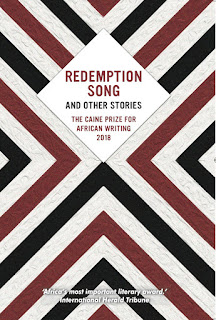
























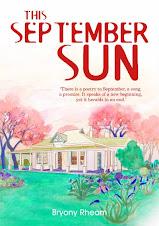.jpg)



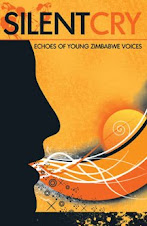


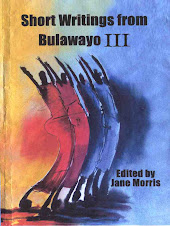


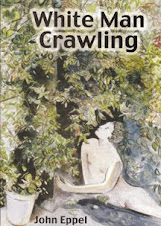










.jpg)





















